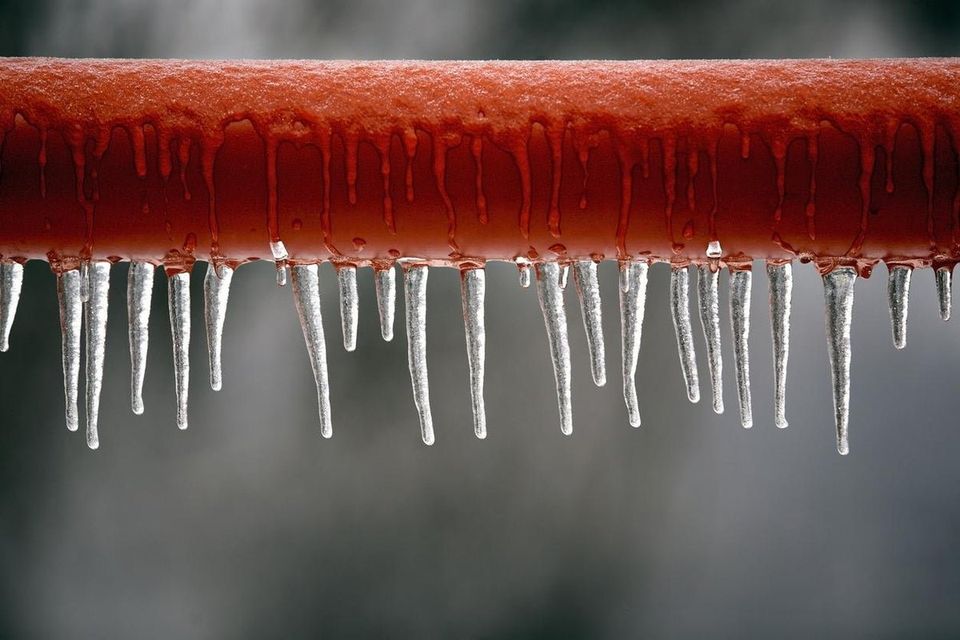Avoiding Frozen Pipes in Cold Weather: Essential Strategies
Avoiding Frozen Pipes in Cold Weather: Essential Strategies
Blog Article
This article in the next paragraphs relating to How to Prevent Your Pipes From Freezing is extremely motivating. Give it a try and draw your own ideas.

Cold weather can wreak havoc on your pipes, particularly by freezing pipelines. Here's exactly how to prevent it from occurring and what to do if it does.
Intro
As temperatures drop, the danger of frozen pipelines rises, potentially causing expensive repairs and water damage. Understanding how to stop frozen pipelines is essential for homeowners in chilly environments.
Avoidance Tips
Insulating at risk pipes
Cover pipelines in insulation sleeves or use warmth tape to shield them from freezing temperatures. Focus on pipelines in unheated or external areas of the home.
Heating techniques
Keep interior spaces sufficiently heated, especially locations with plumbing. Open cabinet doors to permit cozy air to circulate around pipelines under sinks.
How to determine frozen pipelines
Seek reduced water circulation from faucets, uncommon odors or noises from pipelines, and visible frost on exposed pipes.
Long-Term Solutions
Architectural modifications
Take into consideration rerouting pipes far from exterior wall surfaces or unheated areas. Include added insulation to attic rooms, basements, and crawl spaces.
Updating insulation
Buy premium insulation for pipelines, attic rooms, and wall surfaces. Appropriate insulation aids preserve constant temperature levels and minimizes the threat of icy pipelines.
Securing Outside Plumbing
Garden hoses and outdoor faucets
Separate and drain pipes garden hose pipes before winter. Install frost-proof faucets or cover outside faucets with insulated caps.
Recognizing Icy Pipes
What creates pipes to ice up?
Pipes ice up when subjected to temperatures listed below 32 ° F (0 ° C) for extended durations. As water inside the pipes freezes, it increases, putting pressure on the pipeline wall surfaces and potentially creating them to burst.
Threats and damages
Frozen pipelines can bring about water system disturbances, residential property damage, and expensive repair work. Ruptured pipelines can flooding homes and create extensive structural damages.
Indications of Frozen Piping
Identifying frozen pipelines early can prevent them from rupturing.
What to Do If Your Pipes Freeze
Immediate activities to take
If you think icy pipelines, maintain faucets open to relieve pressure as the ice melts. Utilize a hairdryer or towels taken in warm water to thaw pipelines gradually.
Conclusion
Stopping frozen pipes calls for positive steps and quick feedbacks. By recognizing the causes, signs, and safety nets, home owners can safeguard their pipes during winter.
5 Ways to Prevent Frozen Pipes
Drain Outdoor Faucets and Disconnect Hoses
First, close the shut-off valve that controls the flow of water in the pipe to your outdoor faucet. Then, head outside to disconnect and drain your hose and open the outdoor faucet to allow the water to completely drain out of the line. Turn off the faucet when done. Finally, head back to the shut-off valve and drain the remaining water inside the pipe into a bucket or container. Additionally, if you have a home irrigation system, you should consider hiring an expert to clear the system of water each year.
Insulate Pipes
One of the best and most cost-effective methods for preventing frozen water pipes is to wrap your pipes with insulation. This is especially important for areas in your home that aren’t exposed to heat, such as an attic. We suggest using foam sleeves, which can typically be found at your local hardware store.
Keep Heat Running at 65
Your pipes are located inside your walls, and the temperature there is much colder than the rest of the house. To prevent your pipes from freezing, The Insurance Information Institute suggests that you keep your home heated to at least 65 degrees, even when traveling. You may want to invest in smart devices that can keep an eye on the temperature in your home while you’re away.
Leave Water Dripping
Moving water — even a small trickle — can prevent ice from forming inside your pipes. When freezing temps are imminent, start a drip of water from all faucets that serve exposed pipes. Leaving a few faucets running will also help relieve pressure inside the pipes and help prevent a rupture if the water inside freezes.
Open Cupboard Doors
Warm your kitchen and bathroom pipes by opening cupboards and vanities. You should also leave your interior doors ajar to help warm air circulate evenly throughout your home.

I hope you enjoyed our part on 6 Ways to Prevent Frozen Pipes. Thank you so much for spending some time to read our piece of content. Liked our blog posting? Please share it. Let another person find it. I enjoy your readership.
Course Detail Report this page